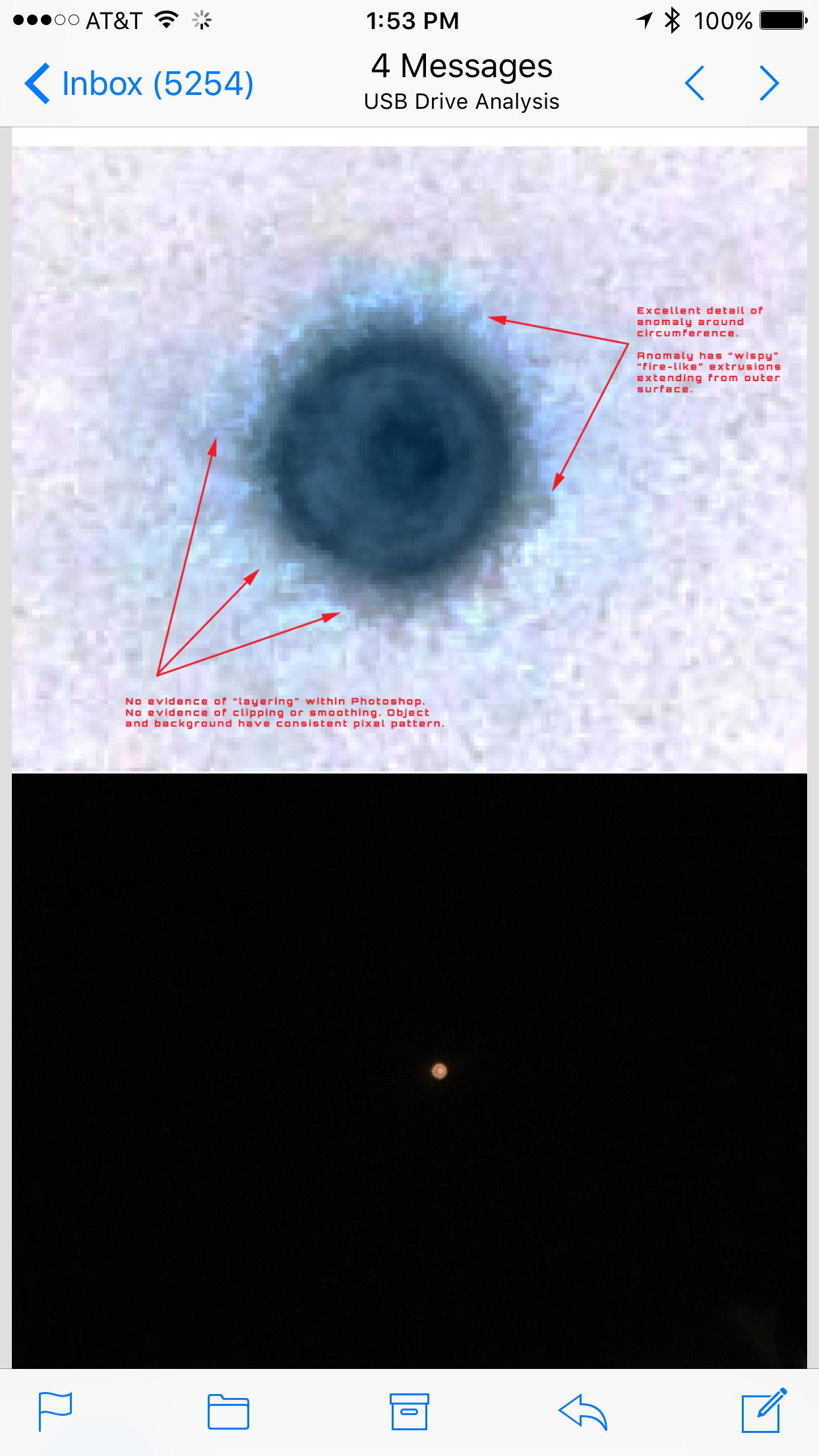
I see everyone debating what they think is in that new video Jeremy Corbell posted. Below I have shared my analysis. By no means at all do I intend to discredit anything anyone is saying, but mostly just spark conversation and encourage people to see things from a different POV.
With that said, I do believe the “Jellyfish UFO” to be splat of some kind, on the lens housing of the IR camera. Maybe not bird poop considering the size of the item in question. When zoomed out, the splat is relatively small, which can be assumed considering the distance between the lens and the housing is no more than a few inches at best (1:1 Technical Drawing of a Gimbal). If you want to check for yourself, screen grab a 100% scale of the drawing and measure the distance from the lens to the edge of the housing with a ruler.
Further proof on the size can be found, assuming we adopt the idea of the existence of a splat on the housing. From the frame at 0:55 of the video, and 1000 zoom, the approximate height of the splat is 9cm tall (relative). Before that, between 0:00 and 0:31, the splat is roughly 27cm tall, for a 3000 zoom (comparison here). An interesting relationship can be observed — that is, the size of the splat increase approximately linearly as the zoom increases. Or in other words, the relative height of the splat increases by the same amount as the zoom (3x). I do encourage you try comparing the height of any of the 1000 zoom frame to a 3000 zoom splat to observe the relationship yourself. This relationship is, of course, expected when zooming in on stationary objects. However, the Jellyfish is allegedly not stationary as it appears to be drifting. In order for this relationship to hold true, assuming the object is moving, then the distance between the lens and the Jellyfish would have to remain constant. This would imply that the path of the IR camera and the Jellyfish would have be consistently equidistant and as a result, completely parallel. According to Corbell (0:53), they were not able to “lock it”, implying that they (the drone operators) were not able to successfully target the Jellyfish. If there was no reference point to measure the distance to the Jellyfish, then how is it possible to maintain this distance at all? A much simpler explanation for the equidistant parallel travel can be offered instead: the distance between the lens, the housing and the splat will always be constant. Ergo, these distance will never change because of the way the IR and housing are built. Admittedly, finding the exact size of the splat is not exactly feasible, given the nature of the many unknown distances. But if the relationship is applied, then the resulting size of the splat is very small.
It is instead proposed that the splat is the result of an impact of an insect on the decline portion of the housing. Insects have been found to fly upwards of 4.5 km in altitude. The chances of coming into contact with an insect may not necessarily be high (maybe even close to zero), considering the vastness of airspace, but unless a probability is exactly zero, then the possibility of occurrence should not be ignored. The shape of the Jellyfish further proves the idea that this is possibly an insect splat. Here is an example of the remains of an insect after hitting the windshield of a vehicle. Notice how a majority of the mass is centralized, and that parts of the mass extend away, as the air pressure pushes it upwards along the windshield. Once it dries into position, it remains so until it is washed off. In the case of the IR camera, the splat occurred on the downward slanted portion of the housing unit. Coupled with the wind speed from the UAV being in motion, this caused the residue to create downward streaks, creating the “tentacles” on the Jellyfish.
The final point to be made is that the splat sometimes appears to be translucent. For example, from 0:23 to about 0:25, you can make out parts of the building behind the splat. While this does occur several times throughout the video, it is not consistent enough to be conclusive. Yet, this characteristic does fit the idea that, if it were the liquid remains of an insect, then the mass are expected to be at least somewhat translucent.
In sum, I think that this video alone does not show sufficient evidence of a drifting Jellyfish UFO. Instead, I believe it to be a splat, or in other words, the dried liquid remains of an insect impacting the housing of the IR camera. I do think that with any kind of additional video proof, the current content of this analysis would 100% void this entire analysis, and for the sake of the community, I hope more footage is released. No idea why we do not have footage of this thing at least coming on-screen or doing the crazy stuff Corbell claims it does. Until then I shall await the data!
submitted by /u/Ok_Temporary_2309
[link] [comments]